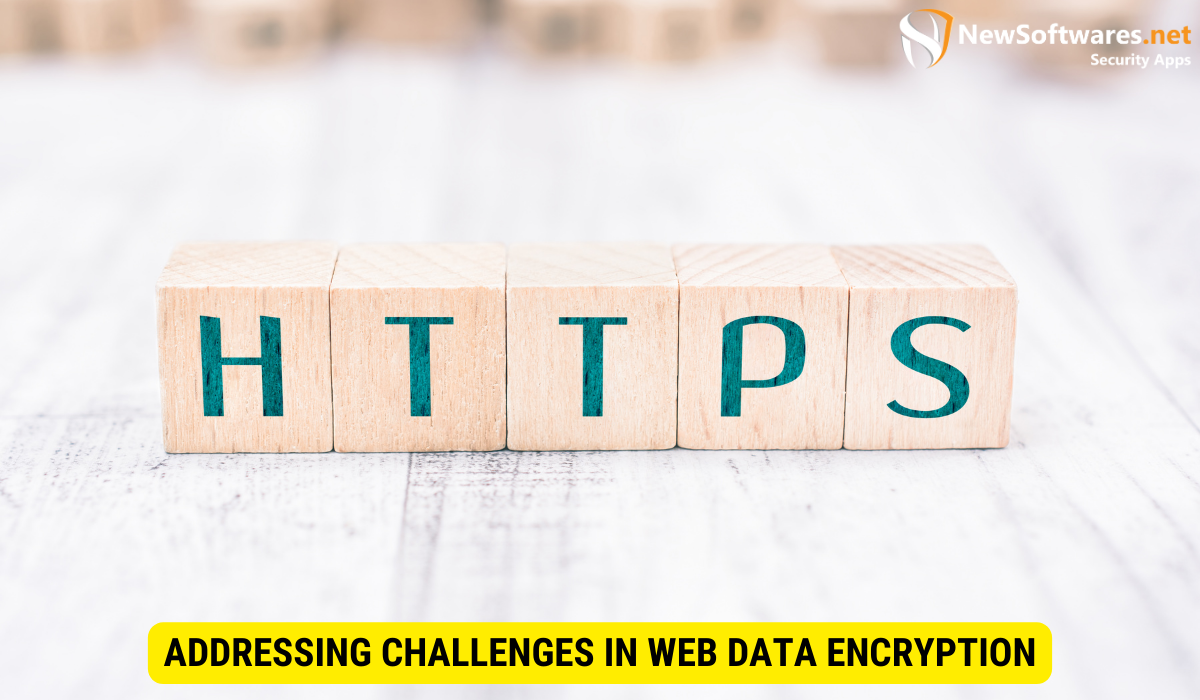In our rapidly expanding digital realm, where sensitive details are frequently exchanged and stored online, the role of web data encryption is increasingly critical in safeguarding user data and ensuring privacy. Encryption involves transforming readable data into a format decipherable only by those with authorized access. As cyber threats grow more sophisticated, both organizations and individuals must embrace and implement the most effective encryption practices to guard against unauthorized access and potential data breaches.
Grasping the Significance of Web Data Encryption

The surge in online activities, including financial dealings and personal data exchanges, underscores the growing importance of robust web data encryption. It serves as a crucial defense against snooping, data manipulation, and unauthorized access, thereby ensuring data confidentiality, integrity, and authenticity.
As reliance on the internet for various tasks like banking, shopping, and communication continues to rise, the imperative for stringent web data encryption becomes increasingly evident. Without it, sensitive data traversing the internet would be susceptible to interception by nefarious entities.
Picture a scenario where you’re making an online purchase, inputting your credit card details and personal information. Without encryption, this data would travel in an unsecured format, easily intercepted by cybercriminals. However, when web data encryption is in place, your information is converted into a format that’s unreadable to anyone except the intended recipient.
The Pivotal Role of Encryption in Enhancing Online Security
Encryption is fundamental in bolstering online security. It secures data both in transit and at rest by converting it into a scrambled format unreadable to unauthorized interceptors. This is particularly vital when transmitting confidential data across public networks.
Accessing a secure website, such as a banking portal, typically involves encryption of your login credentials and other transmitted data. This process significantly hinders hackers’ attempts to access your sensitive information.
Moreover, encryption is essential for protecting data stored on servers or databases. If data is compromised, encryption ensures it remains indecipherable without the appropriate decryption key, offering an additional security layer against breaches.
Key Concepts in Web Data Encryption
Understanding web data encryption requires familiarity with essential concepts like encryption algorithms, keys, and protocols.
- Encryption algorithms are the mathematical instructions for encrypting and decrypting data. They define the security level and complexity of decryption. Popular algorithms include AES, RSA, and 3DES.
- Encryption keys are the secret codes that encrypt and decrypt data. They can be symmetric (the same key for both processes) or asymmetric (different keys for encryption and decryption). Symmetric keys are faster, while asymmetric keys add an extra security layer.
- Encryption protocols are the rules and procedures for secure data transmission. Protocols like SSL and TLS ensure data is encrypted before sending and decrypted upon receipt, providing a secure data exchange channel.
Diverse Methods of Web Data Encryption
Several web data encryption techniques are available to organizations and individuals aiming to secure their data.
- Symmetric Encryption: This method uses the same key for both encryption and decryption, offering efficiency but necessitating a secure key exchange method.
- Asymmetric Encryption: Also known as public key encryption, it employs two keys – a public key for encryption and a private key for decryption, enhancing security by eliminating the need for key exchange.
- Hash Functions: While not strictly encryption, hash functions play a vital role in data security by creating a unique hash value for data, aiding in integrity verification.
Implementing Web Data Encryption: Best Practices
Successful web data encryption involves careful consideration of various factors, such as choosing the right algorithm, managing keys effectively, and keeping software up-to-date.
- Selecting an Appropriate Encryption Algorithm: Opt for established and recognized standards like AES. Stay abreast of developments in encryption technology to combat new threats.
- Effective Management of Encryption Keys: Protect keys from unauthorized access and consider strategies like key rotation and secure storage.
- Regular Updates and Patching of Encryption Software: Address vulnerabilities and enhance security by keeping your encryption tools up-to-date.
Addressing Challenges in Web Data Encryption

Implementing web data encryption isn’t without its hurdles. These challenges require strategic approaches to ensure effective encryption.
- Performance Overhead: Optimization and efficient algorithms can mitigate the performance impact of encryption.
- Compatibility Issues: Ensure that the chosen encryption methods are widely supported for seamless data exchange across different systems.
- Legal and Compliance Considerations: Adhere to relevant laws and industry regulations, ensuring your encryption practices meet mandated standards.
Key Takeaways
- Web data encryption is critical for protecting sensitive online information.
- It ensures data transmission and storage security, thwarting unauthorized access and breaches.
- Different encryption techniques include symmetric and asymmetric encryption, along with hash functions.
- Implementing encryption effectively involves choosing the right algorithm, managing keys securely, and updating software regularly.
- Challenges such as performance impact, system compatibility, and legal compliance must be addressed.
FAQs
What is web data encryption?
Web data encryption is converting data into a secure format to protect it from unauthorized access and ensure confidentiality and integrity.
Why is web data encryption crucial?
It’s vital for safeguarding sensitive information from cyber threats, ensuring secure online transactions and data storage.
What are the primary types of web data encryption?
The main types include symmetric encryption, asymmetric encryption, and hash functions.
How can organizations tackle web data encryption challenges?
By optimizing processes, ensuring system compatibility, and adhering to legal standards.
What are the best practices for web data encryption?
Employing strong algorithms, managing keys securely, and maintaining up-to-date encryption software are among the best practices.
Conclusion
Web data encryption is a cornerstone of modern online security, indispensable for protecting sensitive information and ensuring secure online interactions. By understanding its importance and implementing best practices, organizations and individuals can effectively shield themselves against escalating cyber threats. While challenges persist, they can be navigated through informed strategies and continuous vigilance. As technology and data’s value continue to grow, web data encryption remains an essential aspect of safeguarding our digital lives.
